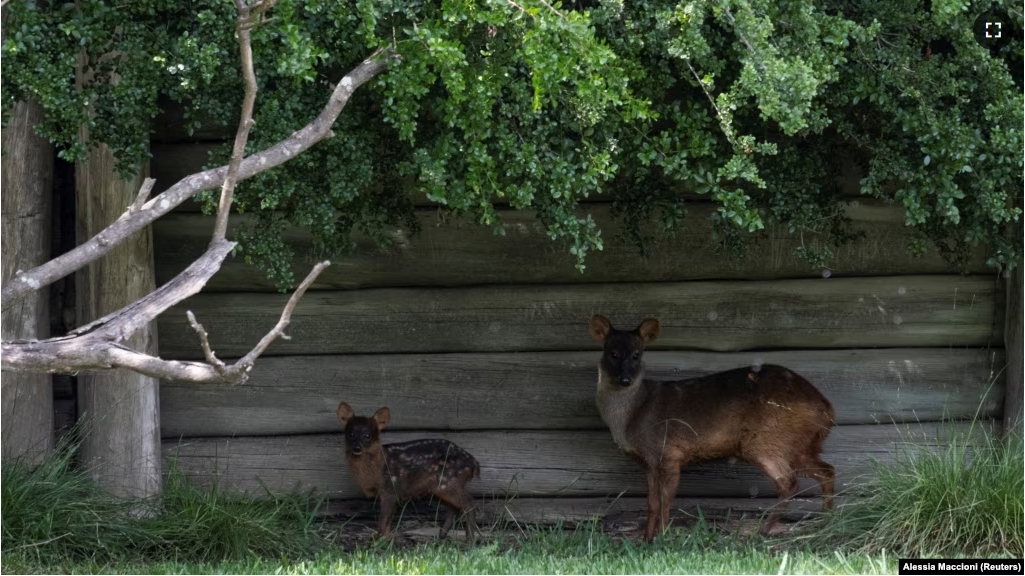Recently, a rare pudu was born in an Argentinian zoo. The birth has given scientists and conservationists a chance to study and collect data on the small deer.
Pudus are one of the smallest deer species in the world. They can grow up to 50 centimeters tall and weigh up to 12 kilograms. At birth, the white-spotted male pudu weighed just 1.21 kilograms.
Workers at the conservation organization Temaiken Foundation named it Lenga after a tree species in the Andean Patagonian Forest of Chile and Argentina.
“It’s a very enigmatic animal. It’s not easy to see,” said Maximiliano Krause. He is Lenga’s caretaker at the nonprofit organization.
Krause says Lenga is spending his days exploring the park with his mother, Chalten, and father, Nicolino. Lenga is breastfeeding for the first two months until he can eat plants on his own.
After that, Lenga will lose his white spots and the spotty skin color that helps small deer hide from both daytime and nighttime predators. At about one year, pudus develop antlers and reach up to 10 centimeters.

Pudus are very elusive animals. In other words, they are hard to find and difficult to see in the wild. When chased by predators, they escape in a zig-zag manner. The small deer also face threats from wild dogs and species introduced into southern Argentina and Chile.
Only about 10,000 pudus remain in the wild. They are classified as near-threatened by the International Union for Conservation of Nature (IUCN).
“This pudu birth is obviously a joy for us,” said Cristian Guillet. He is the director of zoological operations at the Temaiken Foundation.
Guillet said that Lenga will help them research and gather data that will help conservation efforts for pudus and other Patagonian deer, like the huemul.
“(This) offers hope of saving them from extinction,” Guillet said.
I’m Anna Matteo.
Lucila Sigal and Alexander Villegas reported this story for Reuters. Anna Matteo adapted it for VOA Learning English.
________________________________________________
Words in This Story
conservationist – n. a person who is in favor of conservation especially of natural resources (as forests)
species – n. a category of living things that ranks below a genus, is made up of related individuals able to produce fertile offspring, and is identified by a two-part scientific name
enigmatic – adj. of, relating to, or resembling a puzzle or enigma : mysterious
predator – n. an animal that obtains food mostly by killing and eating other animals
zig-zag – adv. one of a series of short sharp turns, angles, or alterations in a course
classify – v. to consider (someone or something) as belonging to a particular group : to arrange in classes that have systematic relations usually founded on common properties
extinction – n. the process of no longer existing : an act of extinguishing or an instance of being extinguished
